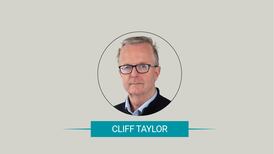Shrouded in secrecy for years, RTE has finally disclosed how each part of its operation performs financially and how licence fee income is being spent, reports Emmet Oliver
The 2003 annual report and financial statements for Radio Telefís Éireann weigh in at a dense 154 pages. It contains, in English and Irish, a wealth of financial information not traditionally disclosed by the broadcaster, the most interesting of which is on page 52/53.
This section on the "segmental" performance of the station's various channels and services has long been in demand by RTÉ rival TV3, by politicians and even by some advertisers.
Director-general Mr Cathal Goan said yesterday the information was likely to "occasion much study and comment". He said: "It will inform the debate on the nature and value of public investment in public broadcasting. It may even provoke controversy".
The segmental information provides a detailed picture on how each part of RTÉ performs financially and how the licence fee income raised from about 95 per cent of Irish homes is being spent.
The first thing to note is that broadcasting costs money, lots of money. For example the cost of the news division in 2003 was a staggering €46.2 million. The whole television unit ate up €181 million in costs in 2003.
The expense of producing TV and radio in a relatively small market is clear in the figures released by RTÉ. Even with licence fee revenue, the following services from RTÉ were loss-making in 2003: Network 2 (€10.4 million), RTÉ Radio One (€3.9 million) and performing groups (€13.4 million).
This last disclosure, that performing groups (essentially two orchestras) received €13.4 million in licence fee revenue, surprised observers yesterday.
But Mr Goan said such things were what made RTÉ a public service broadcaster. "We provide services that cannot be met by commercial revenue," he explained.
Chairman Mr Paddy Wright said RTÉ's role was defined by the Department and if people wanted it changed it was a matter for the Department.
The figures reveal that RTÉ One television remains the station's primary cash cow, bringing in €63 million in advertising revenue, compared to €27 million from Network 2.
RTÉ Radio One brings in €16 million in advertising revenue, but its costs are massive, with news and current affairs programmes alone eating up €16.1 million in costs each year. The pop station 2 FM, according to the figures, is a decent earner for RTÉ.
RTÉ's commercial rivals have long suggested that such an obviously commercial station should be sold, but based on the figures this is unlikely to happen any time soon.
The station, fronted by the like of Gerry Ryan and Dave Fanning, produced almost €17 million in revenue in 2003 and its costs were relatively minor. This left the tidy sum of €3.6 million in surplus for the RTÉ coffers.
The station yesterday emphasised that 2 FM was not in receipt of any licence fee revenue and was able to cover its own costs, plus contribute towards the funding of RTÉ Radio One.
RTÉ management also emphasised that licence fee income was used to pay for Irish productions, rather than bought-in material.
The following services received licence fee income in 2003: RTÉ One television (€68 million); Network 2 (€34 million); RTÉ Radio One (€13.3 million); Lyric FM (€6.2 million); Radio na Gaeltachta (€9.6 million); performing groups (€13.4 million). The annual report also discloses that TG4 received support of €11.8 million.
This could be about to end shortly, however, with the Government expected to push ahead with plans to separate RTÉ and TG4.









